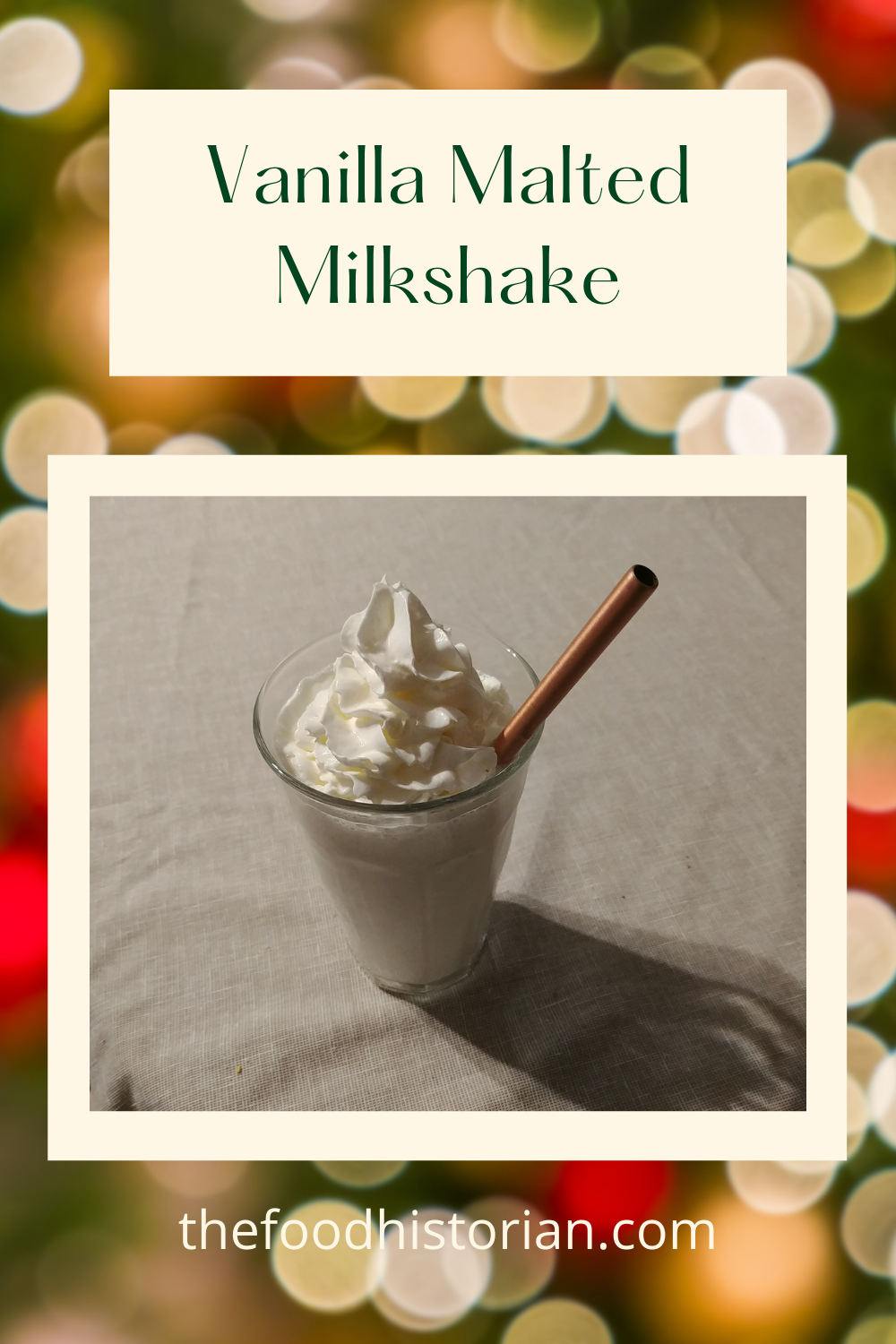|
For those of you who have been following along, this is part of my "Dinner and a Movie: White Christmas" series! A "malted" makes an appearance in my favorite club car scene as Bob, Phil, Betty, and Judy make their way from Florida to Vermont. As they order some late-night snacks, Judy orders a "malted" from the bartender (who, coincidentally, I believe is the only Black person in the entire movie). What she means of course, is a malted milkshake - vanilla, not chocolate. And while I love malted everything, from chocolate-covered malted milk balls to malted milkshakes, this special ingredient has its roots in the brewing industry. Malt is made from barley and was originally a primary ingredient in beer (malt-based beers are some of the only ones I'll drink - I prefer them to hops-fermented ones), and later whiskey. Barley is partially sprouted and then dried and ground to create malt. In the 19th century it also became an industrial baking product, helping to give sweetness and a nice crust to breads. But in the 1870s, British pharmacist James Horlicks was trying to come up with an alternative food to raw milk for infants and a nutritional supplement for invalids. Milk at the time was rarely pasteurized and could often infect children with diseases. Lacking funds, he emigrated to Racine, Wisconsin, where his younger brother already lived. By the 1880s the brothers had patented a fortified gruel that they dried and ground, containing malted barley, ground grains, and dried milk. Developed as a water-soluble food for infants, it was quickly adopted in both tropical climates and polar expeditions for its shelf stability, palatability, and nutritional content. Horlick's brand malted milk became the industry standard and was adopted by the Temperance movement as well, showing up in soda fountains and in ice creams. In 1927, Carnation launched its own brand of malted milk and soon chocolate options were available on the market as well. Ovaltine, a malted milk powder that originally also contained eggs, was developed in Switzerland in the 1900s (originally with the name "Ovomaltine"). By the time we get to White Christmas in 1954, malted milkshakes, including chocolate malts, were a fixture of diners and soda fountains (and, apparently, trains) everywhere. Today, Carnation is one of the few malted milk powders widely available, and that's what I used. They also had a recipe for malted milkshakes right on the back of the container. Vanilla Malted MilkshakesThis recipe is per serving. 2 scoops vanilla ice cream 3/4 cup whole milk teaspoon vanilla extract 3 tablespoons malted milk powder Place all ingredients in a blender and blend until smooth. This did make a very good milkshake - the ratio of ice cream to milk was just about perfect. Although it was maybe a little more liquidy than I like, it didn't get ice crystals, as you sometimes do with homemade milkshakes. That being said, three tablespoons of malted milk powder is a LOT, and resulted in a very strong malted milk flavor. If you're unsure of how fond you are of malted milk, I would cut it down to two tablespoons. This makes about 12-16 ounces, so make sure to pour it into a tall glass and top it with whipped cream. Be sure to follow the White Christmas tag or visit the original menu post for the rest of the White Christmas Dinner and a Movie menu. Are you going to make this, or another beverage from the list? Want to see more Dinner and a Movie posts? Make a request or drop your suggestions in the comments! The Food Historian blog is supported by patrons on Patreon! Join us for awesome members-only content like free digitized cookbooks from my personal collection, e-newsletter, and even snail mail from time to time!
1 Comment
Thanks to everyone who participated in this week's Food History Happy Hour! In this episode we made the Flash of Lightning from the Recipes of American and Other Iced Drinks, London (1902).
For this episode we discussed the recent controversy from Goya CEO and the context and history behind Spanish culture and colonialism in South and Central America, the history of root beer and other early sodas, including ginger ale, birch beer, and sarsaparilla, the origin of root beer floats and ice cream sodas. Flash of Lightning Cocktail (1902)
Here's the original recipe, from Recipes for American and Other Iced Drinks by Charlie Paul (1902):
Fill tumbler with chipped ice, into which squeeze half a lemon; then add half a teaspoonful of sugar, a teaspoonful of raspberry syrup, half a wine-glassful of brandy, a little cayenne pepper; then strain off. And here's my version: In a cocktail shaker over ice, add: Juice of half a lemon 1/2 teaspoon granulated sugar 1 teaspoon (or thereabouts) raspberry syrup 2 ounces cherry bounce one or two taps of ground cayenne pepper Shake then strain into wineglass. This recipe is definitely a quite sweet (thanks in part to the cherry bounce), so if you want something not so sweet, leave off the sugar. As the drink warms and sits the heat of the cayenne will intensify, so you might want to use a light hand to begin with. Episode Links
If you liked this post and would like to support more Food History Happy Hour livestreams, please consider joining us on Patreon. Patrons get special perks like access to members-only content.
|
AuthorSarah Wassberg Johnson has an MA in Public History from the University at Albany and studies early 20th century food history. Archives
July 2024
Categories
All
|




 RSS Feed
RSS Feed